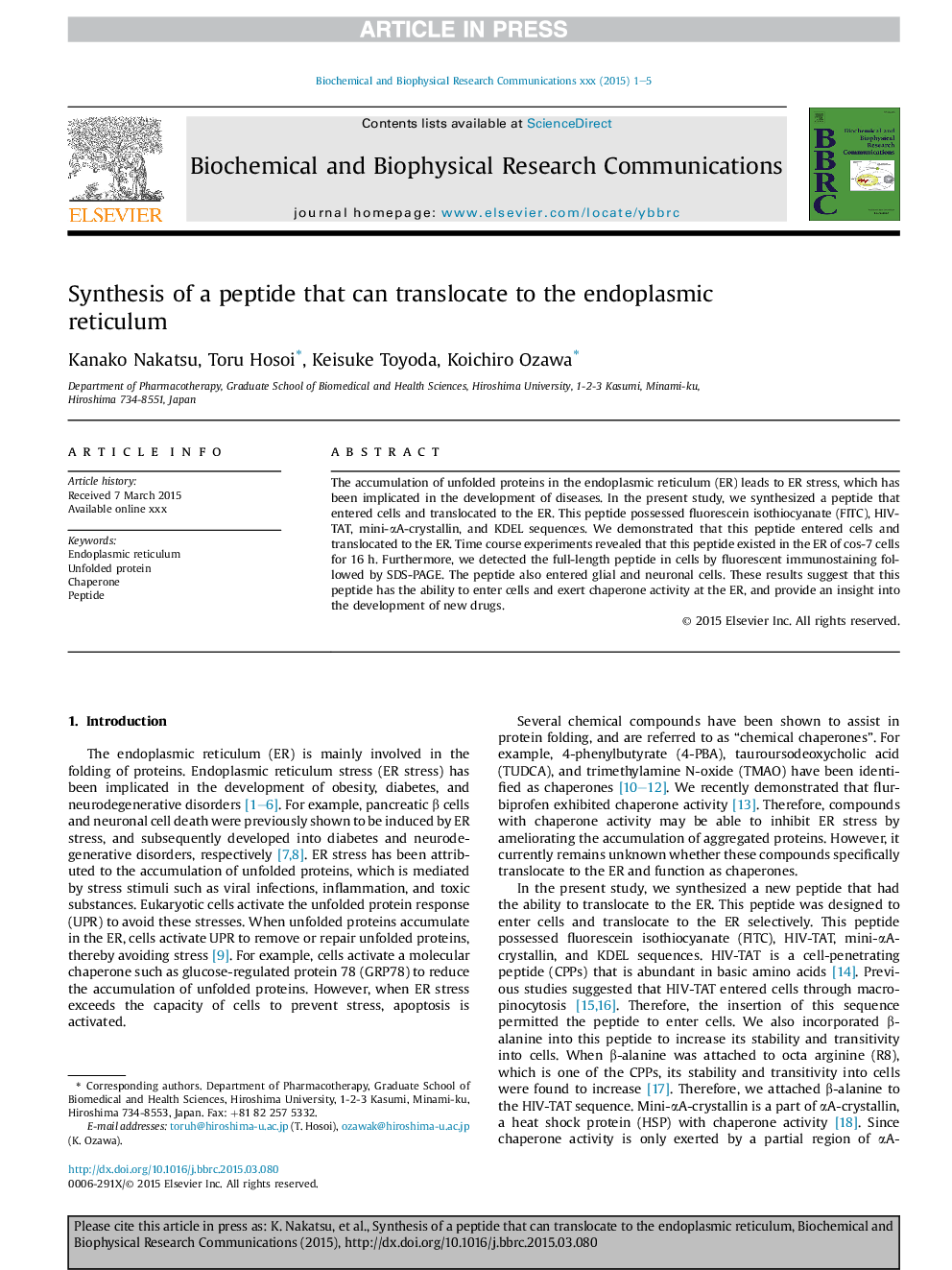| Article ID | Journal | Published Year | Pages | File Type |
|---|---|---|---|---|
| 10752030 | Biochemical and Biophysical Research Communications | 2015 | 5 Pages |
Abstract
The accumulation of unfolded proteins in the endoplasmic reticulum (ER) leads to ER stress, which has been implicated in the development of diseases. In the present study, we synthesized a peptide that entered cells and translocated to the ER. This peptide possessed fluorescein isothiocyanate (FITC), HIV-TAT, mini-αA-crystallin, and KDEL sequences. We demonstrated that this peptide entered cells and translocated to the ER. Time course experiments revealed that this peptide existed in the ER of cos-7 cells for 16 h. Furthermore, we detected the full-length peptide in cells by fluorescent immunostaining followed by SDS-PAGE. The peptide also entered glial and neuronal cells. These results suggest that this peptide has the ability to enter cells and exert chaperone activity at the ER, and provide an insight into the development of new drugs.
Related Topics
Life Sciences
Biochemistry, Genetics and Molecular Biology
Biochemistry
Authors
Kanako Nakatsu, Toru Hosoi, Keisuke Toyoda, Koichiro Ozawa,
